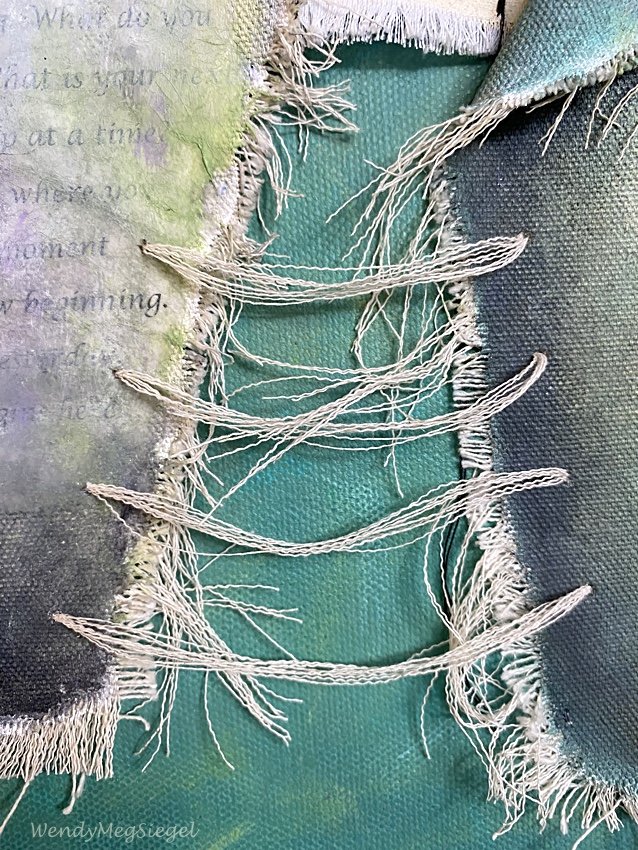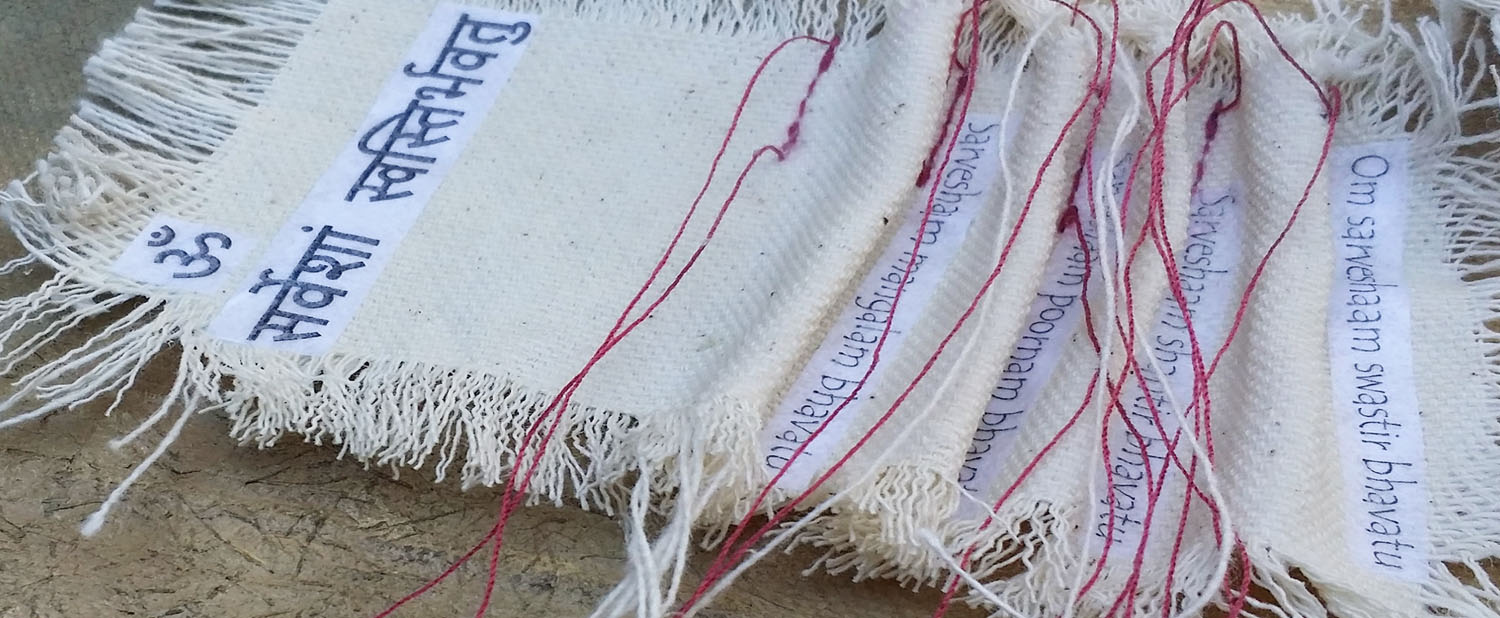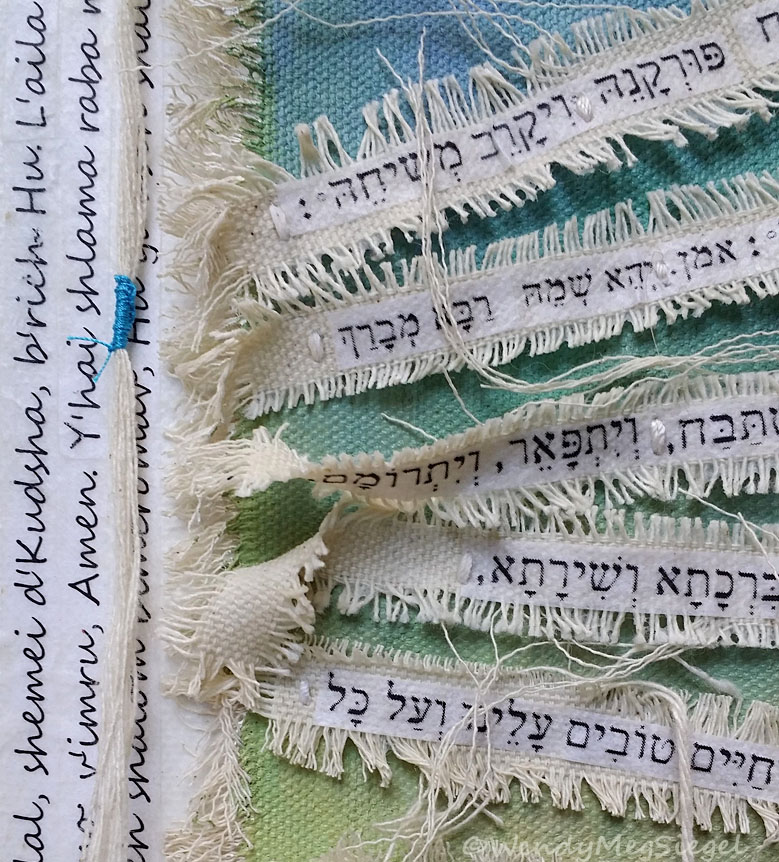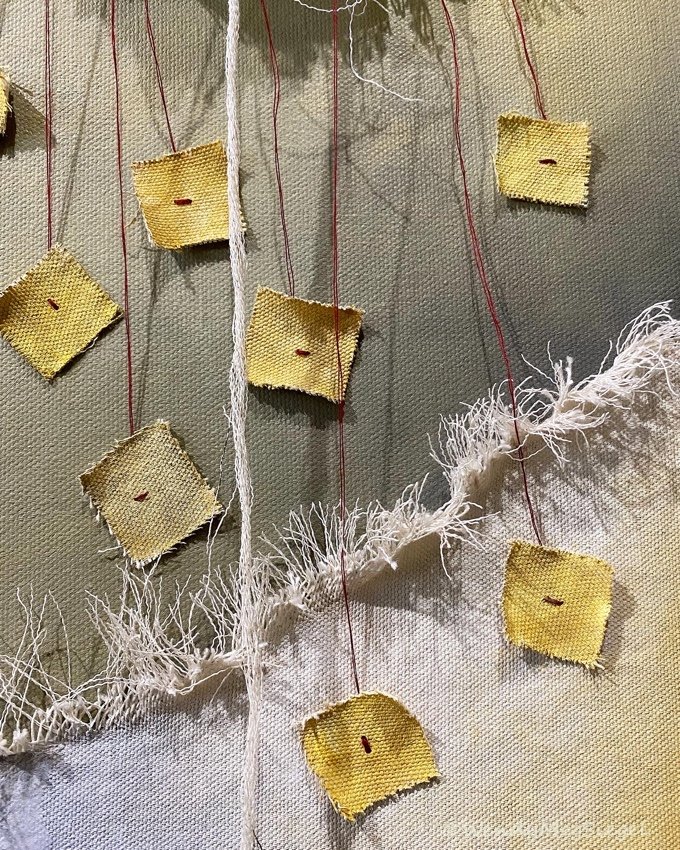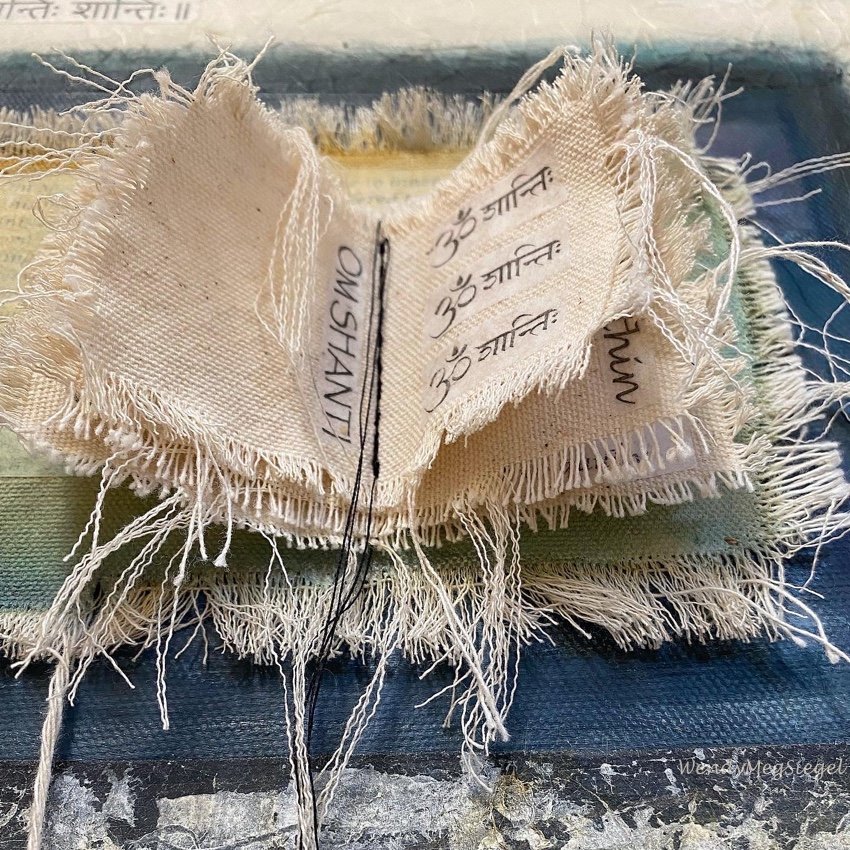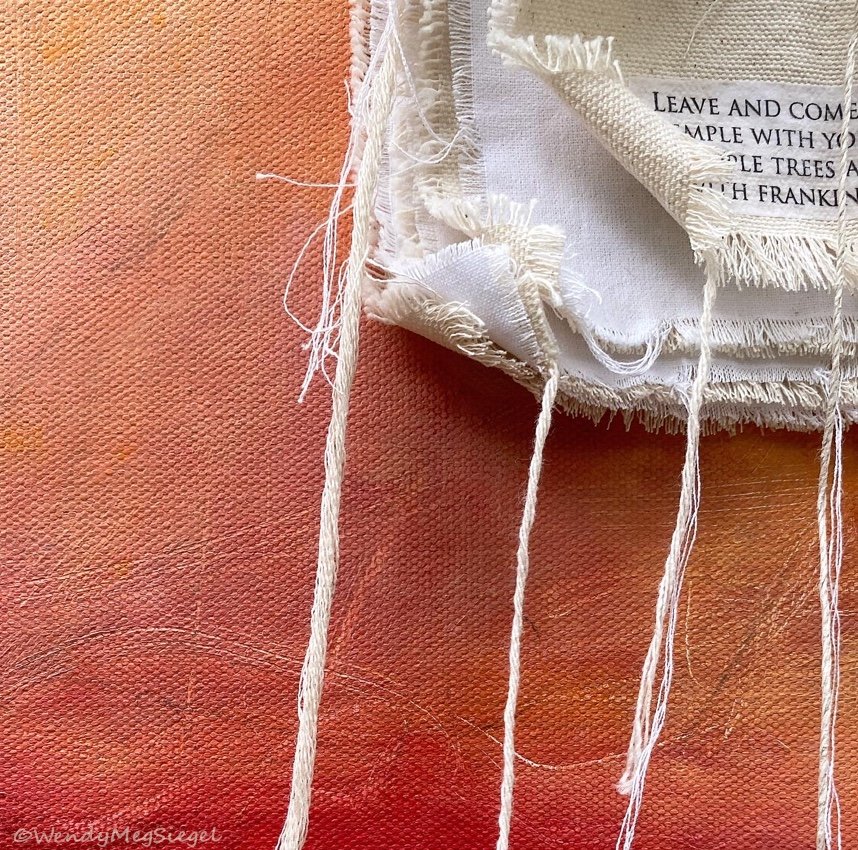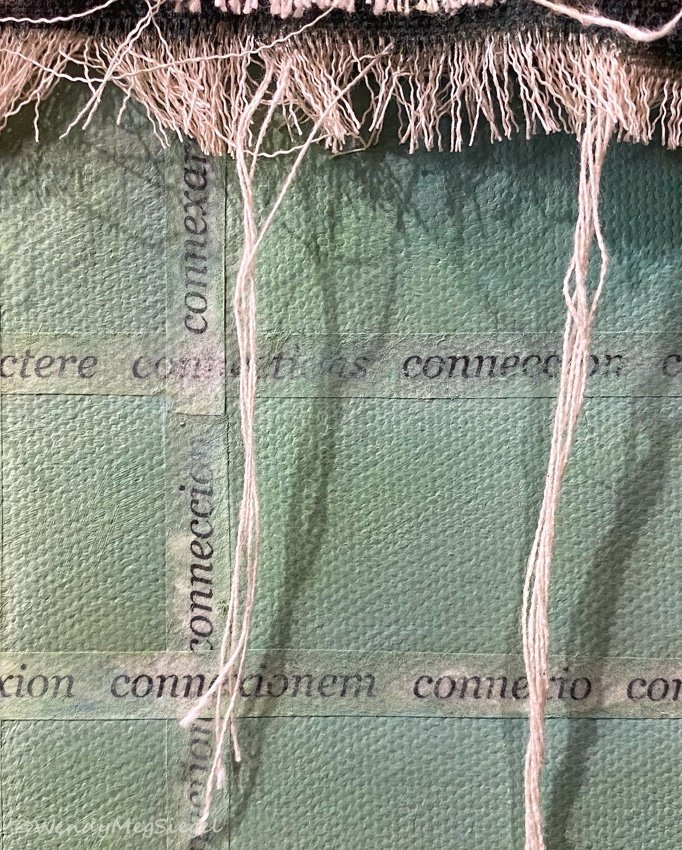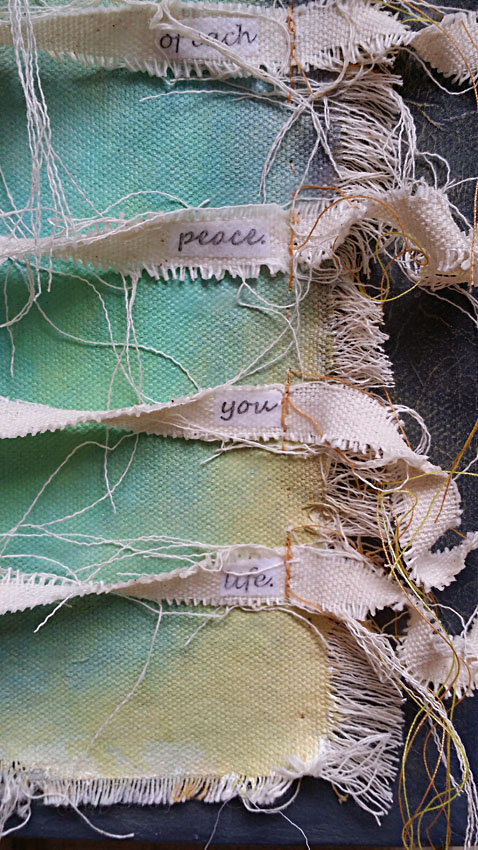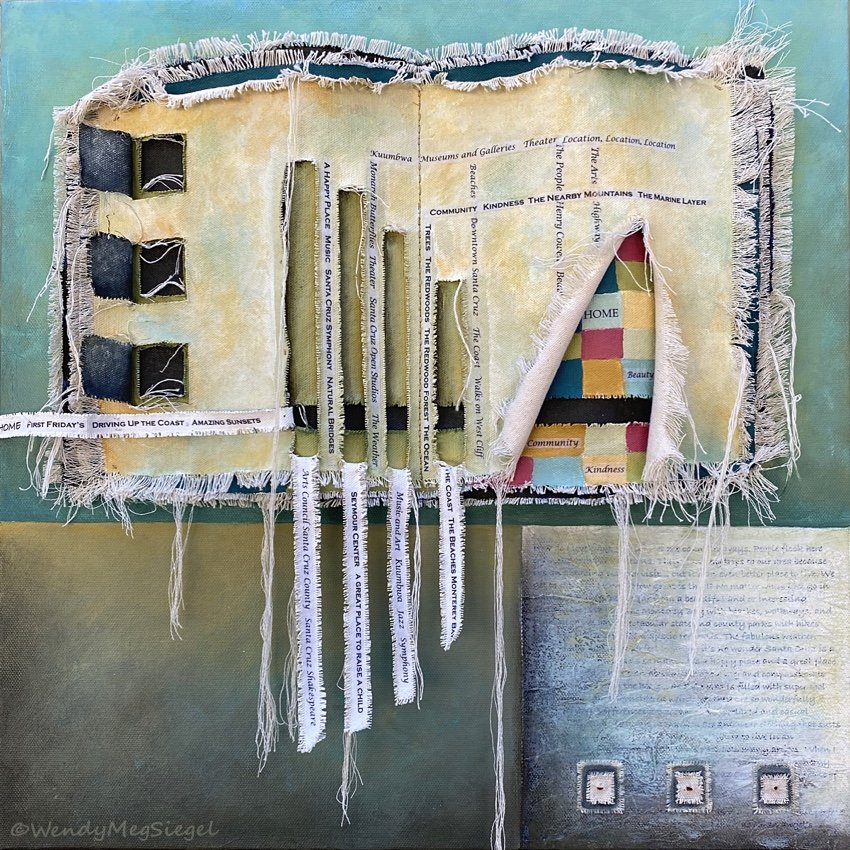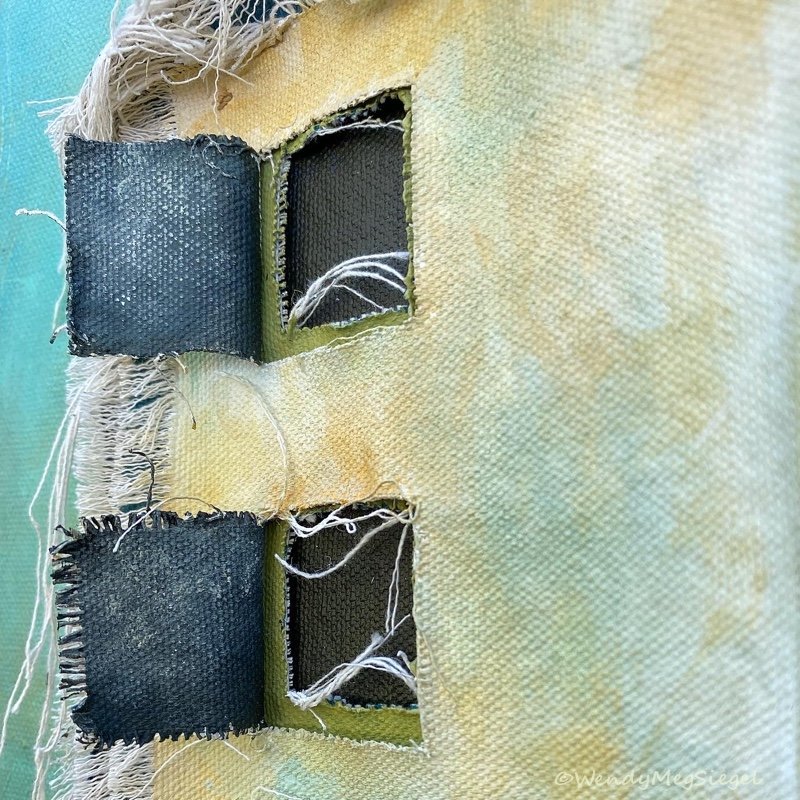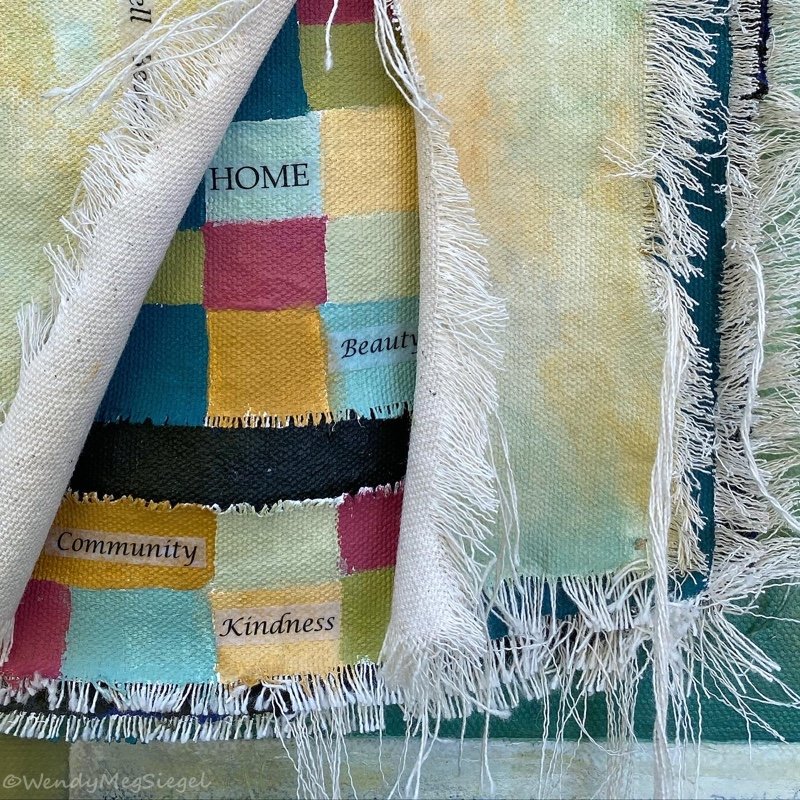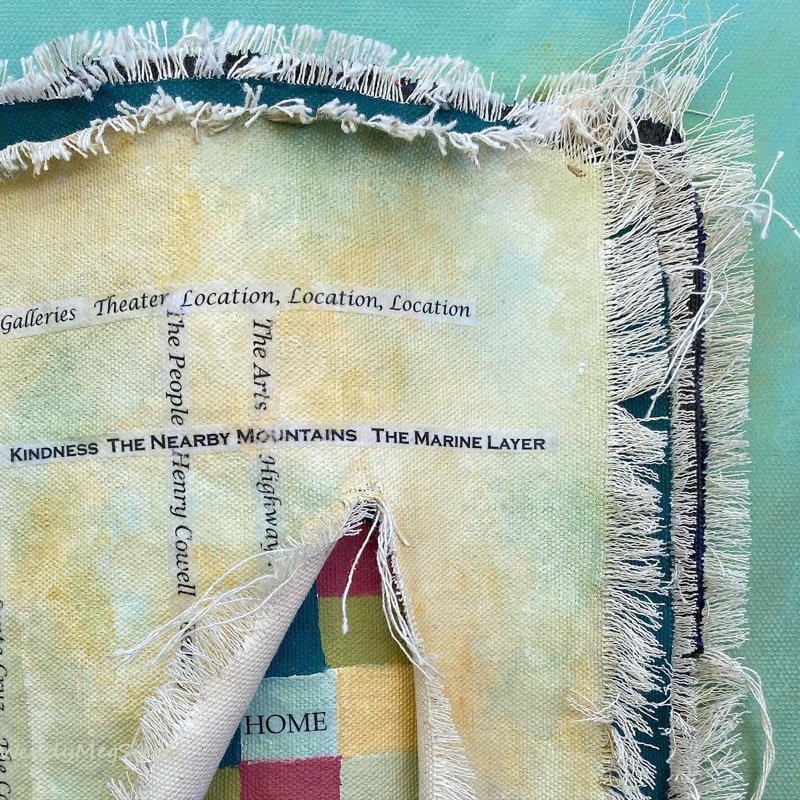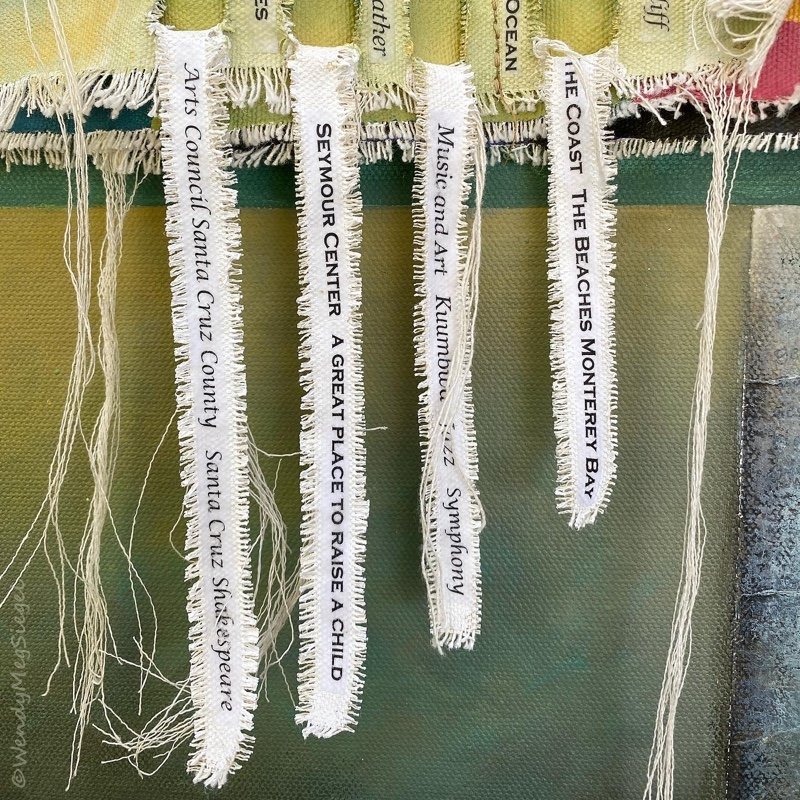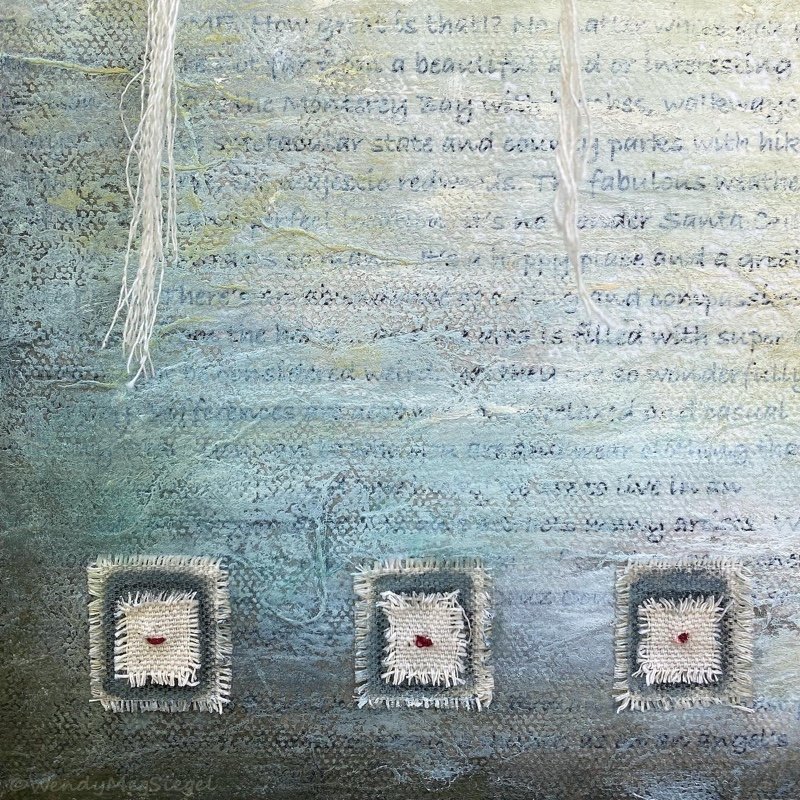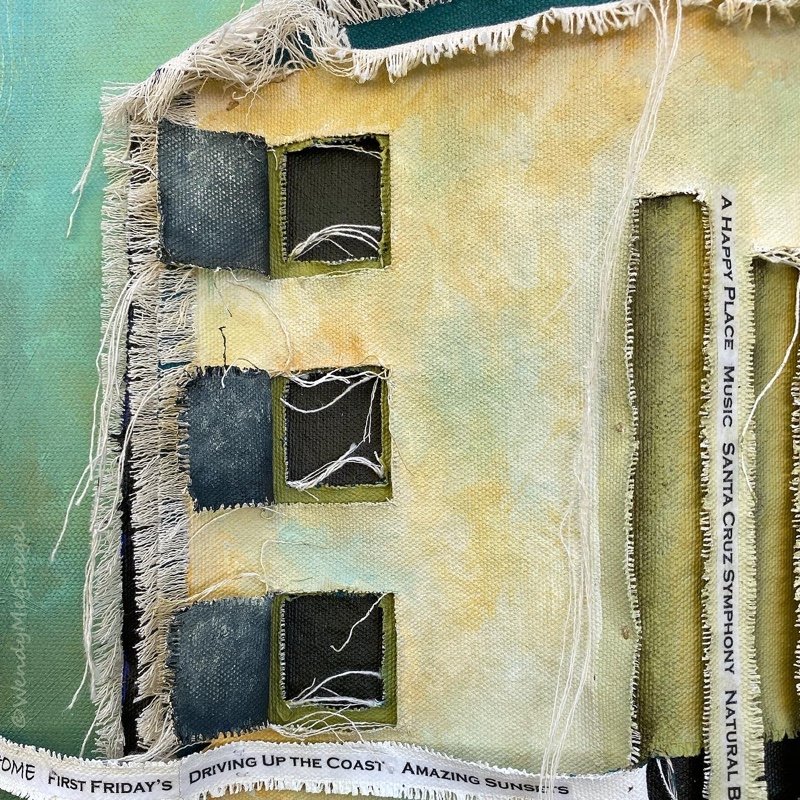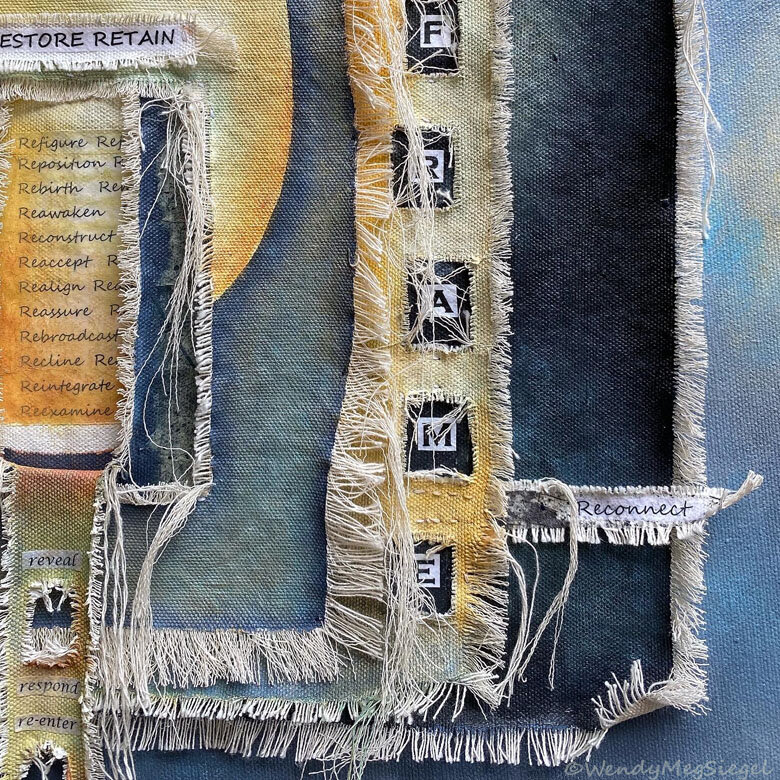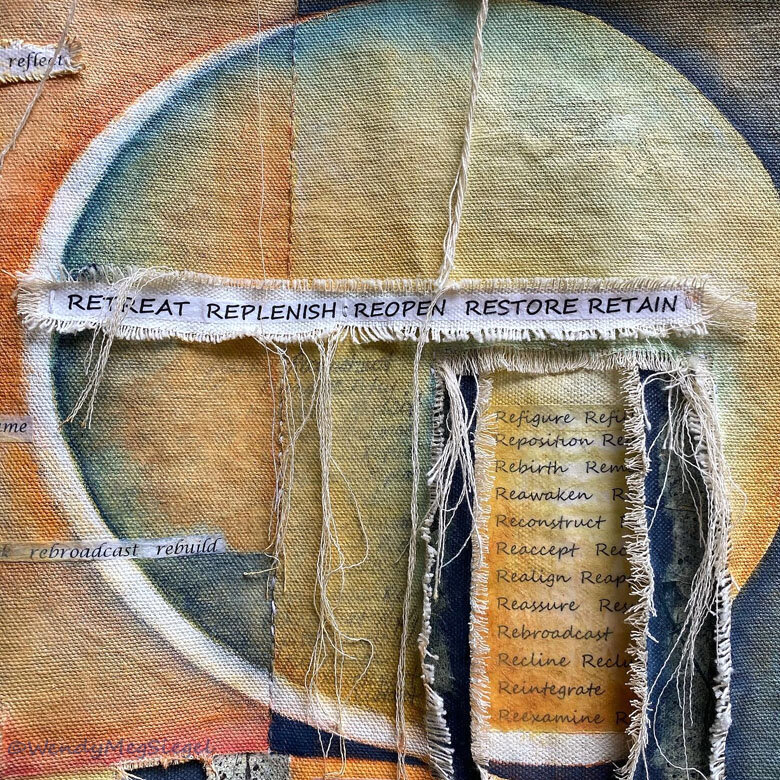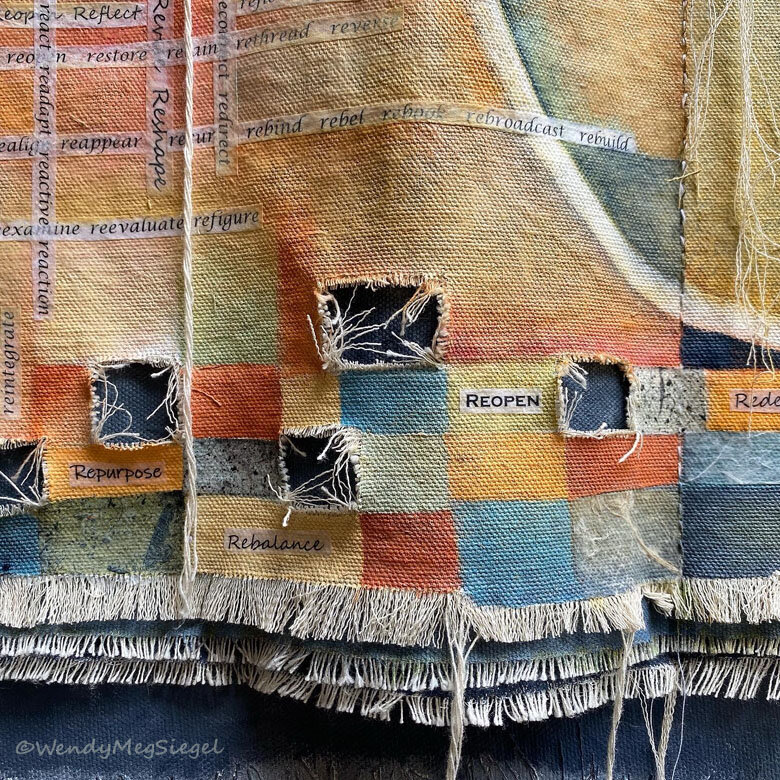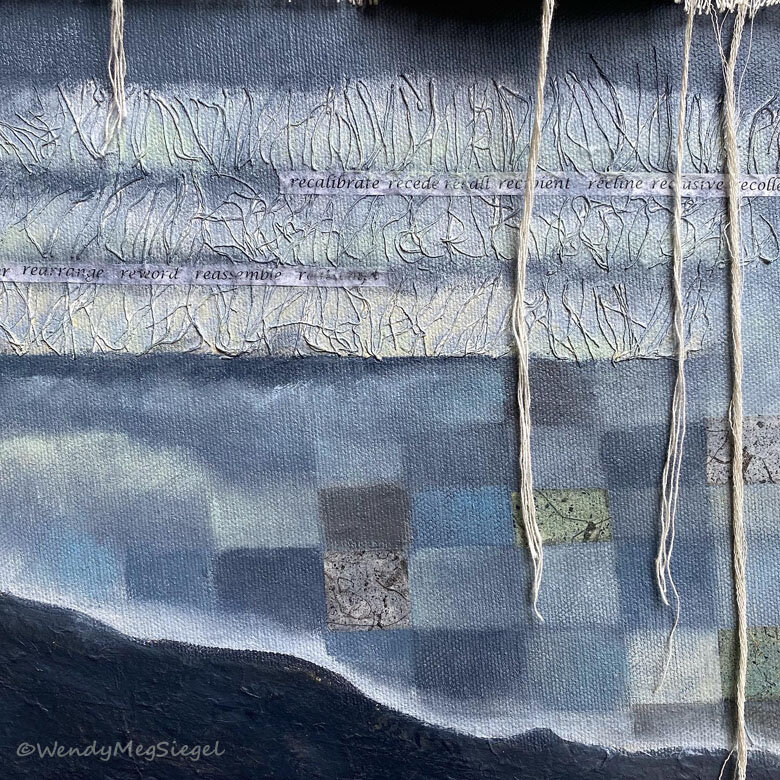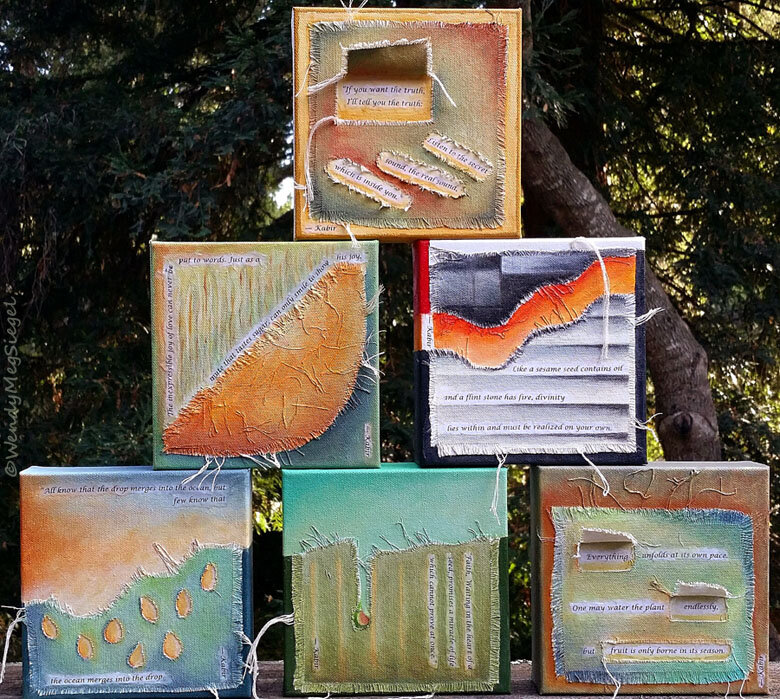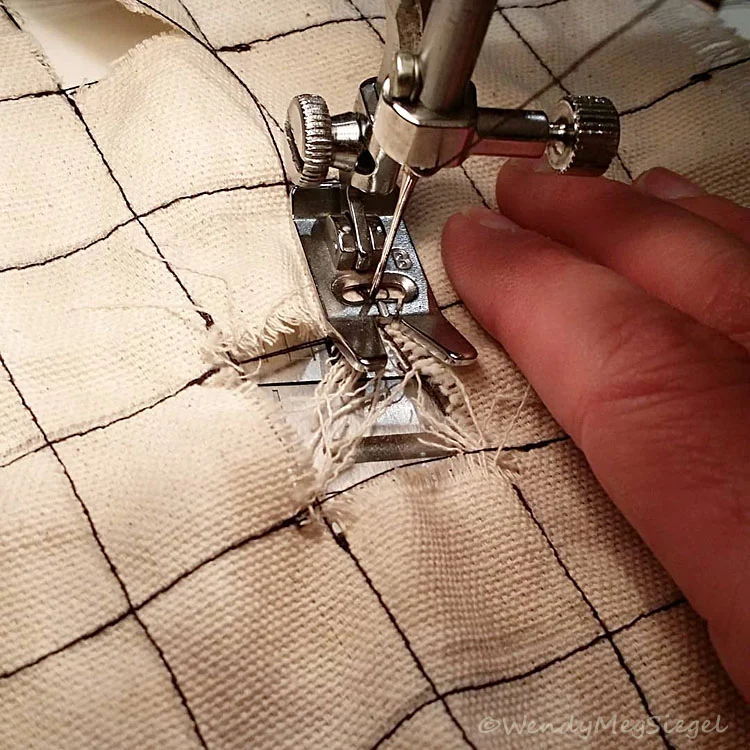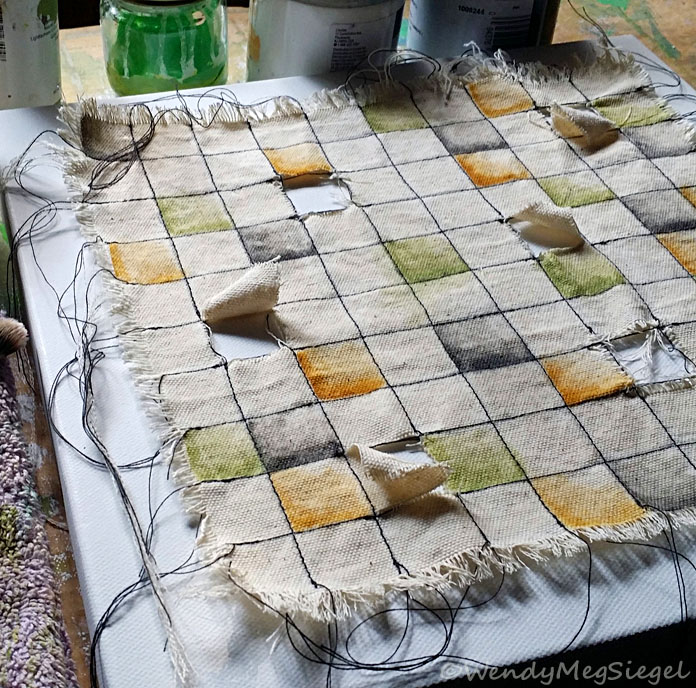I love to use threads in my artwork, to have them appear as lines of stitching on cloth, and to watch them hang down below the defined border of a canvas. I love when they become another element in a painting as a jumble of tangled strings or simply provide texture on the surface below a layer of paint.
One of my friends on Instagram asked me the following question… Do the threads have meaning for me, do they represent something or symbolize something?
This is my answer… I am so attracted to the look and movement of threads, the way they meander and flow. For me, their meaning shifts depending on the specific piece of artwork.
In general, at the core, they are the threads of our connection to one another, to all life on the planet - past, present, and future, and to the Divine. They are the threads of a prayer shawl and those in the tapestry of life. They are the link that bind us to our collective history, to the pictographs and cave paintings, to the philosophers of ancient Greece and the builders of the pyramids. They are our heart connections and the very threads that pull at our heart strings.
And like the magnificent underground network of mycelium that enables communication between plant life, threads represent the unseen connections between all living things.



